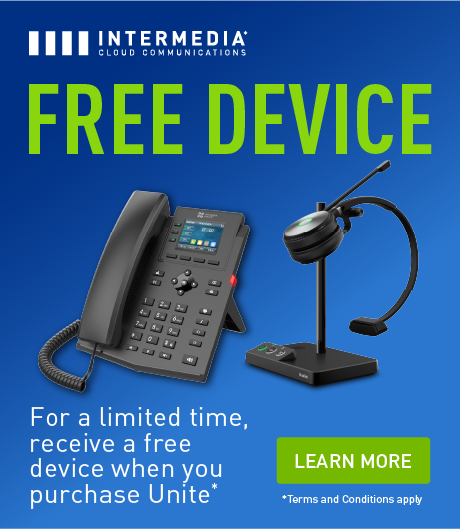The world of business has become very data-driven. Almost every aspect of a company is improvable when you look at the metrics behind it. Your phone communications are no different. Phone metrics can deliver vital insights that, in turn, help you make better business decisions.
In this post, we’ll discuss what phone metrics are, the most important ones to track, and how they can lead to better decision-making.
What Are Phone Metrics?
Phone metrics describe attributes of phone conversations that are measurable. In most cases, they relate to contact center interactions between agents and customers. Additionally, you can use call analytics to determine the performance of sales representatives. In most cases, you’ll only be able to access these data points with a cloud-based VoIP (voice over IP) phone system versus a traditional on-site PBX service.
By tracking certain metrics, you can discover things like the level of customer care, if staffing is sufficient, and how well your call flows are working. Next, we’ll dive into the most important metrics and how they can influence future business decisions.
Phone Metrics That Matter: What Should You Be Tracking?
With a robust platform, you’ll have the ability to track numerous metrics. Many of them can be essential to solving challenges and delivering better outcomes. Here are the ones that matter the most.
Call volume
Call volume is a basic figure that tells you how many calls you’re receiving and when. Over time, you’ll be able to see trends of peaks and valleys. You may find that other metrics are skewing during the spikes because you don’t have enough agents. Defining your busiest call times helps you adjust staffing.
Wait times
How long do callers have to wait in a queue? Obviously, you want this time to be as short as possible for customers. This metric can also inform your plan for the number of agents on duty at different call volume levels.
Call duration
With this metric, you’ll know the average call duration as a whole, as well as by agent. Long call times don’t necessarily mean your employees are slow or uninformed. Some queries are just more complex.
Context is important here, and you can gain this by looking at trends in issues. In the end, this measurement can help you train and coach agents that might be struggling. It can also help you determine recurring issues that keep coming up, which could lead to product enhancements, better FAQs, and better-prepared reps.
First call resolution
Solving a customer’s concerns on the first call is a goal of any contact center. It’s another metric you’d like to see trend up. If it starts to decrease, it’s an indication that there could be more complicated challenges for your customers. It can help you determine if you need to deploy more training or take a holistic look at why customers are experiencing difficulties with your product or service.
Abandoned calls
How often do callers simply hang up when they’ve been waiting “too” long? An abandoned call is a missed opportunity to support a customer or turn a negative into a positive. If this number is increasing, it could mean you need more agents. It could also result from a confusing IVR (interactive voice response) that isn’t routing calls well or providing self-serve options that don’t require agent interaction.
Call transfers
Customers can easily grow frustrated if they bounce around. Sometimes it’s necessary, especially if you have agents that play specific roles—service, support, etc. Your IVR should be placing people into the right queue, but it doesn’t always happen that way. Further, agents sometimes have to escalate calls.
Monitoring this metric can provide insights into your IVR’s effectiveness, agent skillsets, and alert you to emerging challenges with your product or service.
Outbound call analytics
You may want to measure outbound calls as well as inbound to gauge the performance of sales teams. For example, your company may require outbound call quotas for sales. These numbers can tell you how long they are spending on the phone. The information may determine where you set the quota and provide insights on how well your team is at keeping prospects on the phone.
How Do You Effectively Track Phone Metrics?
The building block is a VoIP phone system, but you’ll also need a Contact Center as a Service (CCaaS) platform in the case of contact centers. Such a model provides you with a host of call analytics options, including the ability to view real-time data on dashboards and pull reports in a few clicks. You can see how it works in the video below.
By using this option, all your data is in one place and easily accessible. It’s convenient and efficient for busy contact centers. Additionally, these metrics are available no matter where your agents are: remote or in a central location. A CCaaS solution also allows for an omnichannel approach so that you can track voice, chats, emails, and SMS in one hub.
Phone Metrics Can Drive Your Business Forward
By tracking and understanding phone metrics, you can make better decisions about how you’re serving customers. You can also understand the performance of employees and intervene with support. Doing so could improve your customer service ratings, boost productivity, and improve revenue generation.
If you want to find out how to achieve this, we invite you to explore our CCaaS solution today.
March 8, 2021
Explore other posts on these topics: Unified Communications


